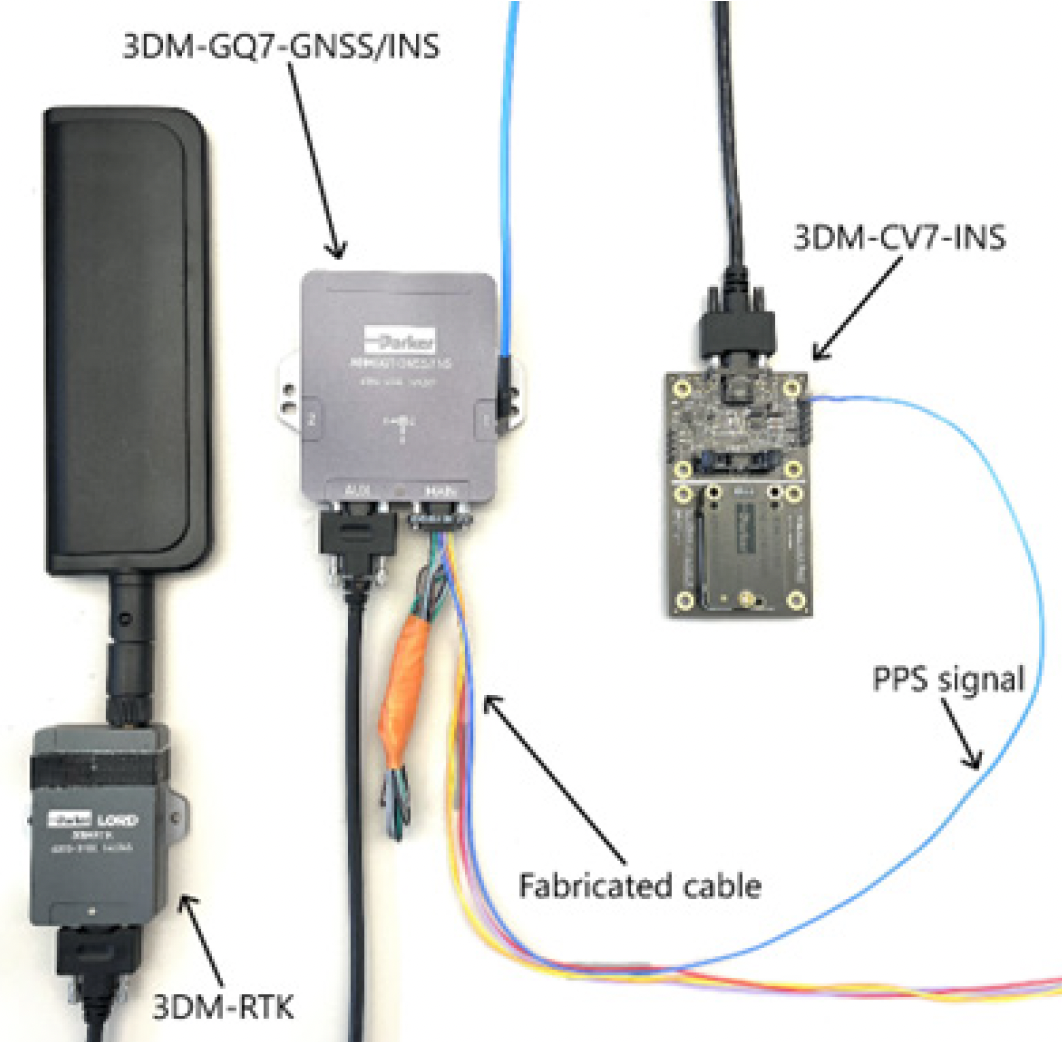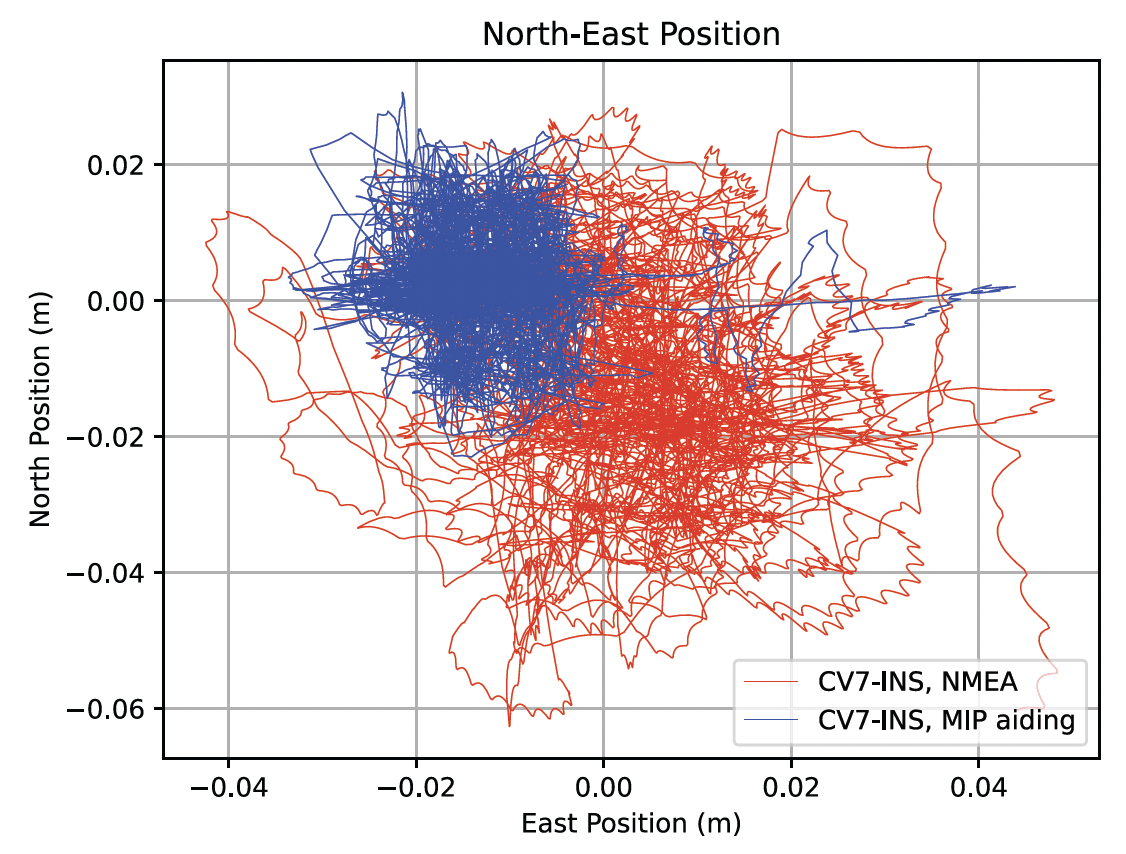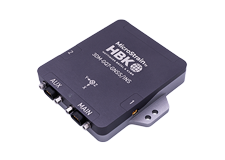Applications
Tags
Parameters
Related Products
- By
- Posted Tuesday, August 13, 2024 - 09:00
Our Field Applications Engineer, Aidan Laracy, did a deep dive to compare the performance of NMEA and MIP GNSS data input methods for the 3DM-CV7-INS. Learn as he explores the trade-offs between ease of integration and precision.
NMEA vs. MIP: choosing the right GNSS data input for the 3DM-CV7-INS
MicroStrain by HBK’s 3DM-CV7-INS is a new, compact, light and embeddable tactical-grade inertial navigation system. It easily integrates with existing global navigation satellite system (GNSS) receivers to provide a full position, velocity, and attitude (PVA) solution, even during GNSS outages.

But how do you choose between the two available methods for providing GNSS data: the industry-standard NMEA format, or MicroStrain’s binary packet protocol MIP? Let’s explore both options and compare their static position performance.
NMEA input – keeping it simple
The easiest way to integrate GNSS data with the 3DM-CV7-INS is to use industry-standard NMEA data directly from an external GNSS receiver’s serial port. No software development is required – just configure the 3DM-CV7-INS and connect a few wires to the receiver.

In an integration example, a 3DM-CV7-INS received NMEA data from a uBlox F9P with RTK fix. A stationary test over 60 minutes yielded a standard deviation of 0.0153 m (North) and 0.0112 m (East).
However, certain assumptions limit full utilisation of receiver performance, resulting in somewhat loose clustering of position data. If NMEA aiding doesn’t provide the position precision you are looking for, or if you are looking for more flexibility with your aiding measurements, our binary packet protocol (MIP) may be the choice for you.MIP aiding – precision and flexibility
MicroStrain’s MIP can be used to send a variety of external aiding data to the 3DM-CV7-INS through the new aiding command set. Aiding commands, such as position and velocity in ECEF or LLH/NED format, align well with common GNSS receiver outputs.

The 3DM-CV7-INS can also accept pre-processed body velocity data from lidar, radar, or optical flow sensors, as well as true heading. These measurements help constrain uncertainty growth during extended GNSS outages.
MIP provides flexibility and specificity, allowing individual uncertainties and validities to be set. Compared to NMEA aiding, where assumptions are required, MIP offers more precise position estimation. In a comparison test, the 3DM-CV7-INS using MIP had a standard deviation of 0.0075 m (North) and 0.0066 m (East), outperforming NMEA.
3DM-CV7-INS: flexibility in your hands
For those seeking rapid development and swift market entry, NMEA messages provide a full PVA solution without additional software requirements.
However, while NMEA is adequate for a full navigation solution, it lacks the comprehensive data necessary for advanced GNSS/INS systems. But setup is quick and requires no software development, making it an attractive option for fast deployment.
The MIP aiding command is a great option if you want to enhance performance and optimise your products. MIP aiding does require some software development to format GNSS data into MIP and interface with the 3DM-CV7-INS. However, this method offers greater flexibility and specificity, providing a more accurate position solution than standard NMEA input.

Both NMEA and MIP methods have their merits. The 3DM-CV7-INS from MicroStrain offers a versatile solution for integrating GNSS data – with MIP aiding for performance optimisation and precise positioning, and NMEA for simplicity and ease of integration.
For more details of the tests and results, download our white paper.









